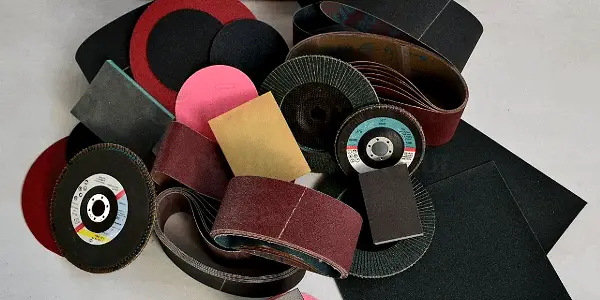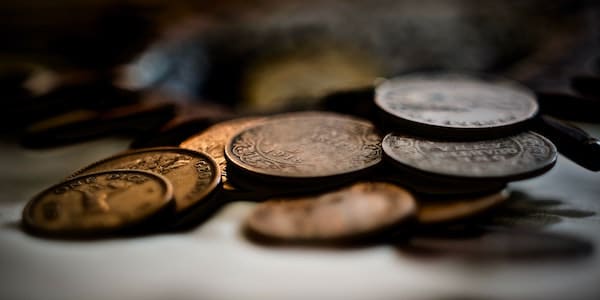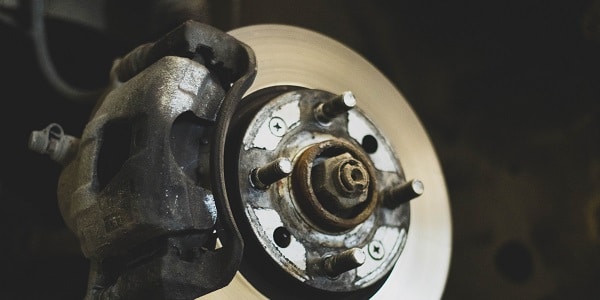The first thing you should know about oxidized copper is that it’s a problem. The second thing you should know is that it can be avoided if handled properly. Let’s take a look at the causes of this issue, how to identify oxidized copper when purchasing or assessing an item, what solutions are available for fixing the problem, and then some tips on avoiding this in the future.
What is oxidized copper?
Oxidized copper is discoloration of the metal caused by exposure to oxygen. This material appears as a greenish or bluish-grey color, which can be easily seen on outdoor statues and art objects. The issue is due to compounds in the air reacting with chemicals present in the copper alloys; this reaction creates different pigments that cause oxidation (or what we know as rusting). Oxidation can also occur when items are exposed to water containing high levels of chlorides, such as saltwater or polluted sea spray. The old adage “if you take care of it, it will last forever” definitely comes into play here as usually this happens because either a lack of maintenance or simply not taking care of something properly. While oxidization occurs naturally over time through weathering processes, it should not take place quickly unless there has been an environmental influence like these listed above.

What are some causes?
Oxidized copper can be caused by a number of factors. These include the type of alloy used in creating your item, improper care or handling, and exposure to certain environmental elements like saltwater or polluted sea spray. Generally speaking, if you see greenish-grey color on an object it is due to oxidation but there are other causes as well that should not be ruled out without some research first (such as natural aging). As mentioned before, this does not happen unless there has been something that has triggered the reaction within the metal itself; for example oxidation rarely happens with items made from metals such as stainless steel because they contain chromium which offers protection against corrosion. Oxidation occurs when exposed to so anything containing high amounts of these compounds can cause this problem to happen once it comes into contact with the copper alloy.
Oxidized copper exists everywhere!
The truth of the matter is that oxidization can exist anywhere since it’s a natural process. However, there are times when this occurs more frequently due to human interference or even environmental conditions taking their toll on an object overtime which means certain steps should be taken in order to avoid any future damage (such as rust). Copper alloys will react differently depending on how long they’ve been left untreated so if you see your metal objects change color after not using them for awhile then take necessary actions immediately before things get out of hand. Remembering cleaning methods and making sure items aren’t scratched too much during polishing processes will also help keep metals looking shiny and new- however these techniques won’t always work 100% of the time and it’s a good idea to be aware of this beforehand.
Don’t forget that oxidation doesn’t always have to occur within metal! For example, wood can react in a similar way if not properly protected against moisture since many elements will act as catalysts for degradation over time (like water) which means you should also keep an eye out for these types of materials too just in case they might need some maintenance later down the line. And finally don’t forget about stone objects either because weathering is another form of oxidization so try avoiding harsh cleaning methods with any items made from natural materials like marble or granite unless necessary- otherwise give them regular cleanings using soap and water instead before sealing them away until their next use.
How do you identify oxidation?
This is a tricky one, because if you don’t know what oxidation looks like to begin with it can be difficult to identify. In general terms an item that has oxidized will have green or blue-grey coloration and in some cases flaking of the surface metal itself. This happens when there are breaks in the protective oxide layer which causes further corrosion by letting moisture get in contact with the copper alloy underneath. If this sounds familiar then congratulations! You’ve probably already figured out your problem without needing any professional help from someone experienced at cleaning up metals (but we’ll cover that later). Sometimes though things aren’t always so obvious; for example items may not necessarily show signs of rust but instead display tarnish marks on their surfaces which could be confused with something else entirely.

What solutions are available?
The best solution for oxidized copper would be polishing and restoration services, which can restore the original luster of your metal object back to its former glory! This process requires a bit more research because if you have items made from other metals such as stainless steel or pewter, they may require different cleaning methods than what might work on something like an old art piece from around 1600 AD! The main purpose in restoring these objects is because this discovery could potentially determine whether it’s worth investing in a major project that aims to remove the problem at hand instead of just “covering up” with paint. In some cases however all it takes is removing dirt particles or simply sanding down the top layer of oxidization to reveal shiny metal underneath.
What methods are available?
Electrolysis

Firstly you can try electrolysis which is a process involving putting your item in an electric current that will remove any corrosion. The only downside here would be if there are other alloys present, as it might cause damage or change their color so use this method with caution!
Baking soda
This method is useful because it can be used on non-ferrous metals like tin, pewter and even bronze. However keep in mind that this process might not work for other types of copper alloys so if you aren’t sure then try testing a small area first before covering the entire surface with baking soda to see what happens!
vinegar
If using something like baking soda powder doesn’t work then another alternative includes soaking your items in vinegar for several hours before washing them off and letting air dry again. These methods should solve some of the problems you’re experiencing but they won’t do much more than that unless you have professional help from someone who knows how to restore metal objects back to their original state (and believe us, we know what we’re talking about).
Copper cleaner
First you will need to shine the copper with an abrasive pad or steel wool and then rub a small amount of cleaner on top.

This is for cleaning not polishing, so only one side should ever be cleaned at once.
You can use your finger tips but make sure they are covered in cream as well before touching the metal piece because if there’s no protection between hand oils and oxidized copper then this could potentially cause damage! Also avoid using paper towels/tissues since these are usually made out of wood pulp which has natural acids that might react with your item (plus they tend to leave behind fibers). If possible try finding softer alternatives such as cloths or even green scrubbers from stores like Walmart instead.
One of the biggest mistakes people make is using steel wool on both sides, which can leave scratches behind.
If this is an issue that you’ve been dealing with for some time then you might be able to remove it on your own, but if not then don’t worry; there are plenty of professionals out there who can help! If possible try looking up places like “metal restoration” or something similar (be sure they specialize in copper) and see what kind of process they use when handling situations such as yours. Just remember that even though a place may say that they offer these services doesn’t necessarily mean their work will give a quality finish because a lot goes into polishing metals properly which includes surface preparation techniques, proper chemicals and tools, and proper skill.
What is the possible future of oxidized copper?
The most important thing is to be sure that the oxidized copper you’re dealing with isn’t actually a sign of something worse. If it is then you really need both an aesthetic and functional approach, which includes stripping away any grease or oils on the object itself before starting your treatment options (which will vary depending on what’s causing bad oxidation in the first place). For example if there are paint residues stuck onto your metal item then this needs to be removed beforehand so proper polishing can take place later. This process requires patience as well because rushing through anything could cause irreversible damage! It might not seem like it but even just removing dirt particles from crevices without using chemicals can also have adverse effects such as damaging other metals nearby by leaving scratches.
If you’ve ever seen a painting with oxidized copper, it’s usually because the artist used some kind of unusual technique to create an effect on their piece and in most cases this is mainly found as green or brownish tones (although sometimes orange and other colors can appear). If possible try not to change these tones too much because then your entire object will end up looking like something that wasn’t even intended by its original creator! You might be able to remove them completely if they’re at least somewhat faded but there are also those instances where bad oxidation serves as part of the aesthetic value for older pieces (and could potentially decrease its worth if changed back into “normal” metal again).

Also you can polish the item if you want, but it’s important to keep in mind that this will only work on the visible parts of your piece. There are still some cases where oxidized copper can exist underneath other objects or inside crevices so there is no guarantee that brightening up its appearance won’t have any consequences later on.
How can I prevent future oxidization?
The best thing you can do to prevent future issues with oxidized copper is to keep it clean! Not only will this help reduce the amount of damage that may take place but it also means less intensive treatment options need to be put into practice. After all, cleaning your objects regularly not only saves them from further degradation but it’s just good for general maintenance since dirt and dust build up overtime which create new obstacles for metal polishing processes (such as scratching). If possible try using a microfiber cloth or something similar because these are great at trapping particles without too much effort on your part. A soft bristle brush can also work if there aren’t any deeper crevices within what you’re trying to polish so make sure to brush away any dust or dirt before you start your polishing process.
Don’t forget that you don’t need to use harsh chemicals either! Many of them are bad for the environment and can cause more harm than good when it comes to restoring metals back into their original state (and we’d like to avoid such a thing). Instead, try using soap and water on surfaces with no paint; if there is then be sure not to rub too hard because this might remove some of what’s left behind which will make things worse in the end. And if possible find out exactly how old the object itself is so at least you’ll know what kind of maintenance has been put into its creation beforehand which means less guesswork for yourself later down the line.
What other issues might apply?
There is a lot of potential damage that may be caused by oxidation such as weakening the object itself, exposing dangerous chemicals/toxic substances (which could cause further health problems), and even creating holes where moisture will seep through which creates more rust and corrosion. It’s important to remember that once an item starts oxidizing it eventually leads into having extensive surface pitting or the metal beneath begins to flake away. Time can also affect these types of metals depending on how long they’ve gone untreated; for example copper alloys will change color over time from its original appearance if left unattended such as turning silver-grey instead of gold, but this isn’t always the case for all types of metals.

People who are interested in metal restoration should be aware that it is necessary to avoid certain techniques like sand blasting which can cause further damage due to debris and potential exposure, as well as avoiding re-tinning (which basically means adding new solder). Sandblasting isn’t an ideal technique anyway unless you’re trying to remove paint or rust off because metal particles will get everywhere so this process could potentially create more problems than solutions if not carefully done by professionals with proper equipment.
Conclusion
Oxidized copper is a problem that can be caused by issues like improper metal polishing, exposure to moisture and chemicals (such as paint), or simply old age. There are many ways to reduce the risk of oxidation in metals depending on what you’re trying to polish/restore; however it’s important not only prevent these types of problems from happening but also act quickly when they do because oxidization has extensive negative effects such as pitting, flaking away layers underneath each other, dangerous health concerns (like exposing lead based objects), etc. If possible find out how long ago an object was made so at least you have some idea about its current condition which may help save time later down the line if there isn’t too much rust or corrosion.




Leave a Reply